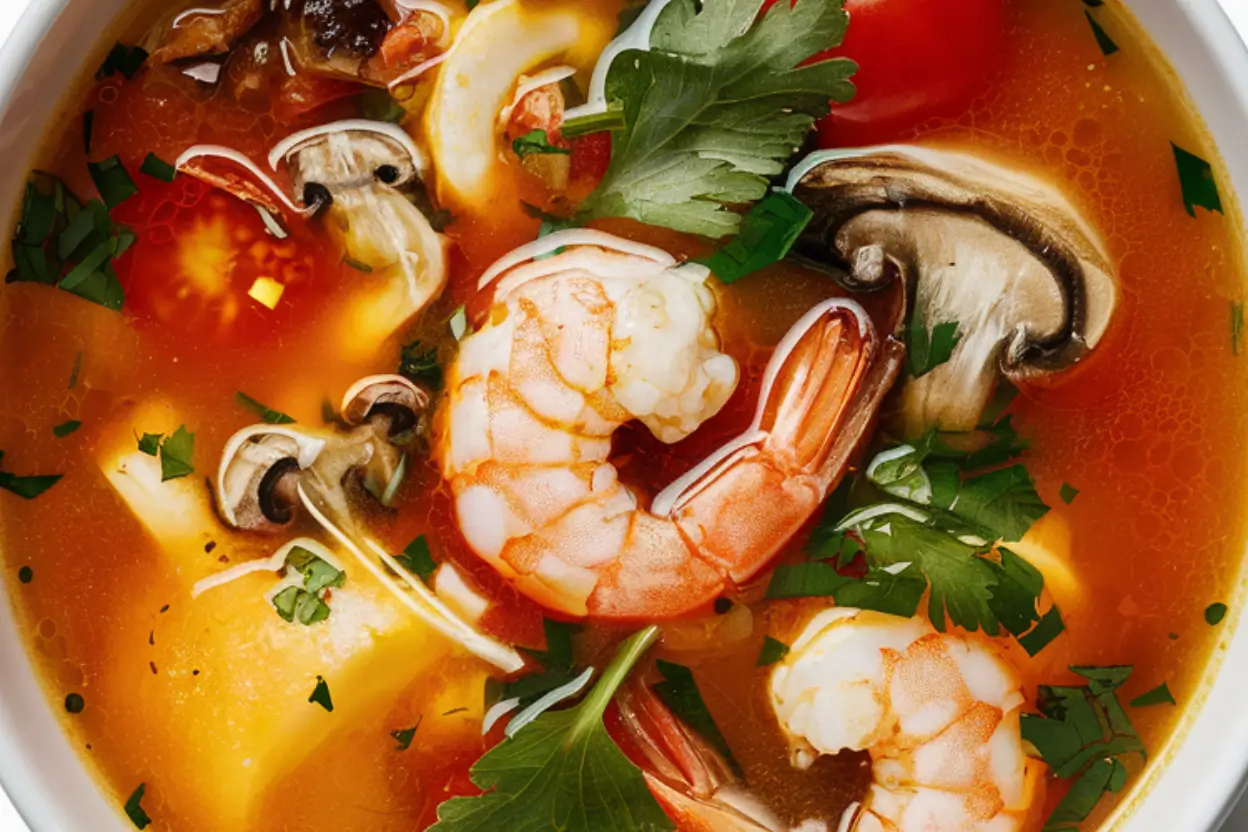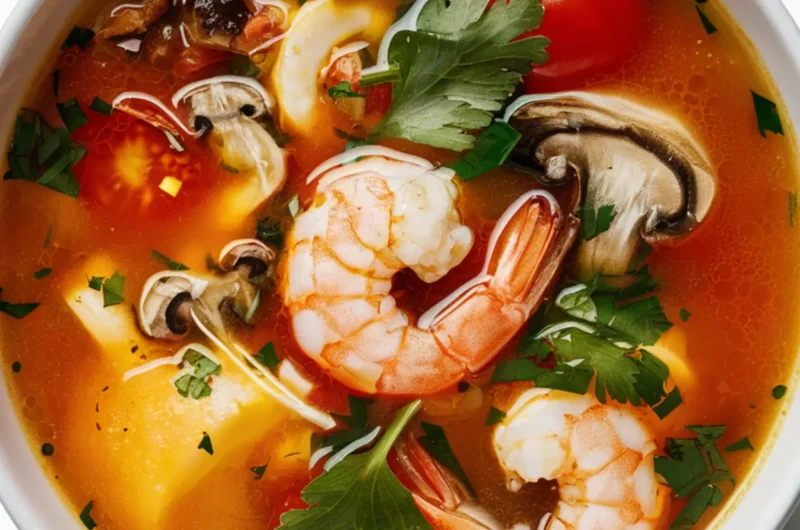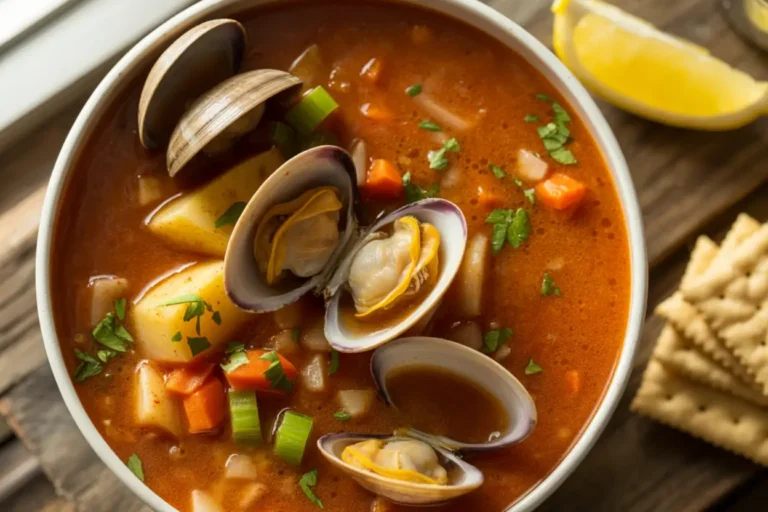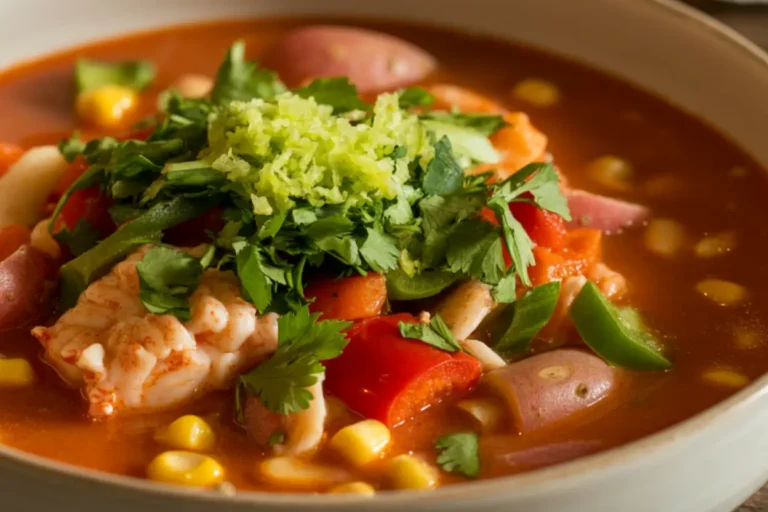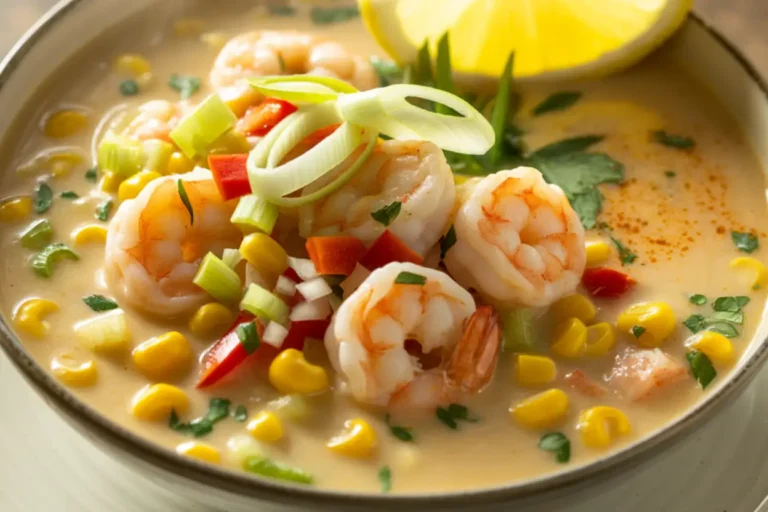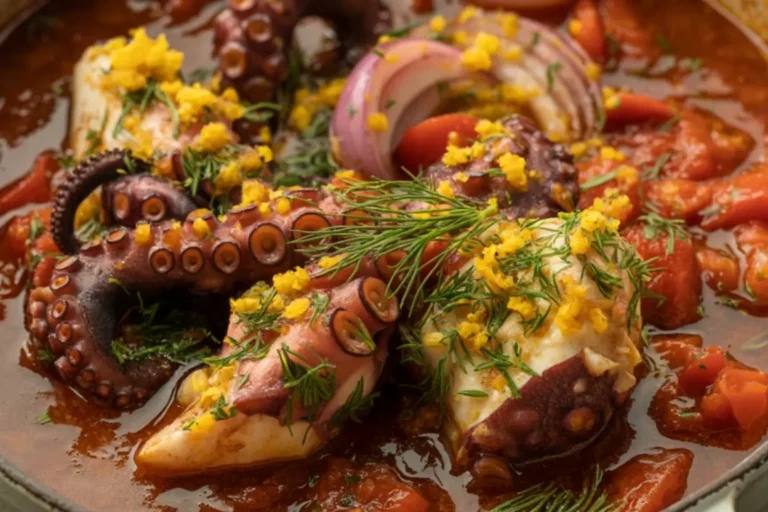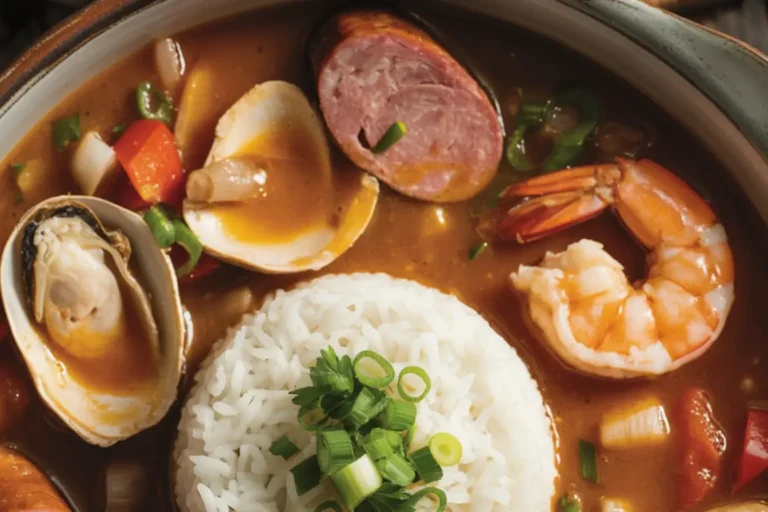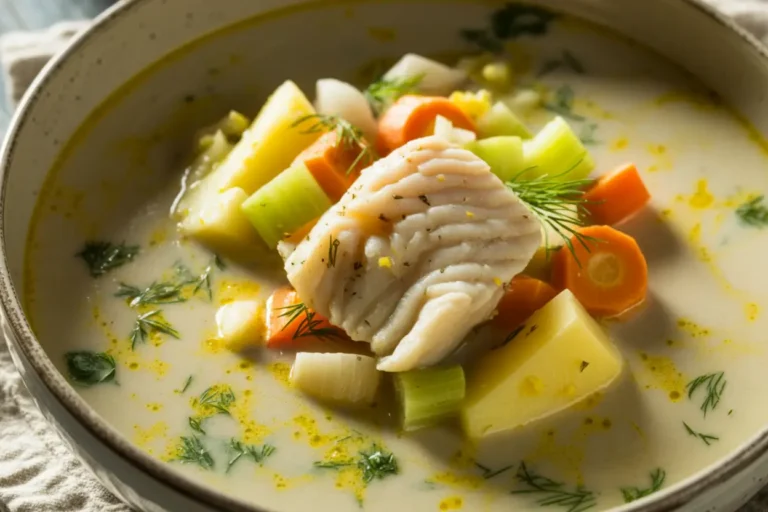Tom Yum Soup Recipe: How to Make It Like a Local
Table of Contents
There’s nothing quite like the aromatic experience of Tom Yum soup wafting through your kitchen – that incredible fusion of lemongrass, lime, chili, and herbs that instantly transports you to the vibrant streets of Thailand. After spending several months traveling through Thailand and learning from local chefs, I’ve perfected a Tom Yum soup recipe that captures the authentic flavors while remaining achievable in your home kitchen.
Thank you for reading this post, don't forget to subscribe!This iconic Thai soup has become one of my go-to recipes when I crave something simultaneously warming, refreshing, and bursting with complex flavors. Whether you’re looking to expand your culinary repertoire or simply craving an authentic taste of Southeast Asia, this Tom Yum soup recipe delivers restaurant-quality results with straightforward techniques. Let me guide you through creating this magical dish step by step.
How to Make Tom Yum Soup
Quick Overview
Tom Yum soup (ต้มยำ) is the perfect balance of sour, spicy, fragrant, and savory flavors that dance across your palate with every spoonful. What makes this recipe special is its ability to deliver deep, complex flavors in a relatively short amount of time. Unlike many Western soups that require hours of simmering, authentic Tom Yum soup comes together in about 30 minutes total, with only 15 minutes of active preparation time.
The clear broth version (Tom Yum Goong Nam Sai) features a light, aromatic base infused with lemongrass, galangal, makrut lime leaves, and chilies. For those who prefer a richer experience, I’ll also explain how to create the creamy version (Tom Yum Goong Nam Khon) with the addition of coconut milk or evaporated milk. Both variations feature plump shrimp that cook to tender perfection in the fragrant broth.
What truly sets this recipe apart is the layering of fresh herbs and aromatics that create a broth so vibrant you’ll find it hard to believe it came from your own kitchen rather than a decades-old street stall in Bangkok. The best part? You don’t need any specialized cooking skills – just fresh ingredients and attention to detail.
The Ingredients I Use to Bring My Tom Yum Soup to Life
For the broth (serves 4):
- 6 cups chicken stock (preferably low-sodium)
- 3 stalks lemongrass, outer layers removed, cut into 3-inch pieces, and bruised
- 4 slices galangal, ¼-inch thick (about 2-inch piece)
- 4-5 makrut lime leaves, torn slightly
- 3-4 Thai bird’s eye chilies, bruised (adjust to your spice preference)
- 2 shallots, halved
- 2 tablespoons fish sauce
- 3 tablespoons fresh lime juice (from about 2-3 limes)
- 2 teaspoons palm sugar or light brown sugar
- 2-3 tablespoons nam prik pao (Thai chili paste)
For the soup ingredients:
- 1 pound medium shrimp, peeled and deveined (tails left on)
- 8 oz oyster mushrooms or straw mushrooms, torn into bite-sized pieces
- 2 medium tomatoes, cut into quarters
- 1 can (13.5 oz) coconut milk (optional, for creamy version)
- 3 tablespoons fresh cilantro leaves, roughly chopped
- 2 green onions, thinly sliced
For garnish:
- Fresh cilantro leaves
- Thinly sliced Thai chilies
- Lime wedges
Step-by-Step Instructions
- Prepare the aromatics: Start by preparing your lemongrass. Remove the tough outer layers and cut off the root end and the dry top portion. Cut the remaining stalk into 3-inch pieces. Using the back of your knife or a pestle, bruise these pieces to release their essential oils and fragrance. Slice the galangal into thick coins – no need to peel it. Tear the makrut lime leaves slightly to help release their flavor. Bruise the Thai chilies by gently pressing with the flat side of your knife.
- Create the broth base: In a large pot, bring the chicken stock to a gentle boil over medium-high heat. Once boiling, add the prepared lemongrass, galangal, makrut lime leaves, Thai chilies, and halved shallots. Reduce heat to maintain a simmer, then cover and let these aromatics infuse the broth for about 10 minutes. This critical step develops the signature fragrance and flavor foundation of Tom Yum soup.
- Season the broth: After 10 minutes of simmering, the broth should be fragrant and flavorful. Add the fish sauce, 2 tablespoons of lime juice (reserve the rest for adjusting later), palm sugar, and nam prik pao (Thai chili paste). Stir well to incorporate all the seasonings and allow them to dissolve completely. Taste and adjust if needed – authentic Tom Yum should have a pronounced sour flavor balanced by saltiness and a touch of sweetness.
- Add the vegetables: Add the quartered tomatoes and mushrooms to the broth. Simmer gently for 2-3 minutes until the tomatoes start to soften and the mushrooms become tender but still maintain their texture. The vegetables will continue to cook as you complete the remaining steps, so avoid overcooking them at this stage.
- Cook the shrimp: Once the vegetables have softened slightly, add the peeled and deveined shrimp to the pot. Simmer just until the shrimp turn pink and opaque, about 2-3 minutes. Be careful not to overcook the shrimp as they can become rubbery. The residual heat will continue cooking them even after you turn off the heat.
- Create the creamy version (optional): For Tom Yum Goong Nam Khon (creamy version), add the coconut milk at this stage, stirring gently to incorporate it without breaking up the shrimp. Simmer for just another minute to heat through. Skip this step if you prefer the clear version (Tom Yum Goong Nam Sai).
- Final seasoning: Turn off the heat and add the remaining tablespoon of lime juice, chopped cilantro, and sliced green onions. Taste once more and adjust the seasoning if necessary – you may want more lime juice for sourness, fish sauce for saltiness, or sugar for sweetness. Remember that a great Tom Yum soup should have a bold, well-balanced flavor profile.
- Serve immediately: Ladle the hot soup into serving bowls, ensuring each bowl gets a good mixture of broth, shrimp, and vegetables. Garnish with additional fresh cilantro, sliced chilies for extra heat, and lime wedges for those who prefer an even more pronounced sour flavor.
What to Serve Tom Yum Soup With
Tom Yum soup works beautifully as part of a larger Thai meal or can stand alone as a satisfying light meal. Here are some perfect pairings:
As part of a traditional Thai meal:
- Jasmine rice: The neutral flavor of steamed jasmine rice provides the perfect canvas for the bold flavors of Tom Yum.
- Pad Thai: The classic stir-fried noodle dish offers textural contrast to the soup.
- Som Tum (green papaya salad): The crisp, refreshing nature of this salad balances the warm soup.
- Gai Yang (Thai grilled chicken): The smoky, herb-marinated chicken complements the aromatic soup.
For a simpler meal:
- Roti bread or a crusty baguette: Perfect for dipping and soaking up the flavorful broth.
- Simple cucumber salad dressed with rice vinegar and a touch of sugar for a cooling element.
- Thai fried rice (Khao Pad) for a more substantial meal.
Beverage pairings:
- Thai iced tea or coffee provides a sweet counterpoint to the spicy soup.
- A cold lager beer like Singha or Chang.
- For wine lovers, an off-dry Riesling or Gewürztraminer pairs nicely with the spicy, aromatic notes.

Top Tips for Perfecting Tom Yum Soup
- Use fresh aromatics: The soul of Tom Yum soup lies in its fresh herbs and aromatics. While dried versions of lemongrass and galangal exist, they simply won’t provide the vibrant fragrance and flavor that defines an authentic Tom Yum. Plan ahead and source fresh ingredients for the best results.
- Don’t skip the bruising step: Bruising the lemongrass, galangal, and chilies may seem like a minor detail, but it’s crucial for releasing their essential oils and maximizing flavor infusion into the broth. Use the flat side of your knife or a pestle to gently crush these ingredients before adding them.
- Balance the key flavors: Authentic Tom Yum has four dominant flavor profiles: sour (from lime), spicy (from chilies), savory (from fish sauce), and aromatic (from herbs). After adding all ingredients, taste and adjust these elements to achieve harmony. Remember that you can always add more lime juice, fish sauce, or chilies, but you can’t take them away.
- Consider ingredient substitutions: If you can’t find some traditional ingredients, here are workable substitutions:
- Galangal: Ginger can work in a pinch, though the flavor will be different.
- Makrut lime leaves: Lime zest (2 teaspoons) plus a bay leaf.
- Thai chilies: Serrano or small red chilies with a pinch of cayenne.
- Nam prik pao: A mixture of chili sauce, tamarind paste, and a touch of shrimp paste.
- Timing matters for shrimp: Add the shrimp only in the final few minutes of cooking. They’ll continue cooking in the hot broth even after the heat is turned off. Aim for them to be just opaque and still juicy when serving.
- Keep the ingredients chunky: Traditional Tom Yum contains large pieces of aromatics that aren’t meant to be eaten but infuse the broth with flavor. Don’t chop the lemongrass, galangal, or lime leaves too small – they should be easily identifiable and removable while eating.
Storing and Reheating Tips
Tom Yum soup is best enjoyed fresh, but leftovers can be managed effectively with these tips:
Short-term storage:
- Remove larger pieces of lemongrass, galangal, and lime leaves before storing.
- Allow the soup to cool to room temperature, but do not exceed 2 hours.
- Store in an airtight container in the refrigerator for up to 2 days.
- For the creamy version with coconut milk, consume within 1-2 days as coconut milk can separate and spoil more quickly.
Freezing (best for clear version only):
- The clear version (without coconut milk) freezes relatively well.
- Think about taking out the shrimp before freezing the soup and then adding fresh shrimp when you reheat it.
- Store in airtight containers or heavy-duty freezer bags and freeze for up to one month.
- Leave some headspace in containers as the soup will expand when frozen.
- I don’t recommend freezing the creamy version as coconut milk can separate and develop a grainy texture when thawed.
Reheating:
- Stovetop: Warm slowly over medium-low heat until it just starts to simmer. Avoid boiling vigorously to prevent the shrimp from becoming tough.
- Microwave: Use 70% power and stir frequently to ensure even heating.
- If the soup has thickened after refrigeration, add a small amount of chicken stock or water when reheating.
- For best flavor, add a squeeze of fresh lime juice and some freshly chopped cilantro after reheating.
- If you removed the shrimp before storage, add fresh shrimp during reheating, simmering just until cooked through.
By following these detailed instructions and tips, you’ll create a Tom Yum soup that rivals those served in Thailand’s best restaurants. The complex layers of flavor will transport your taste buds straight to the streets of Bangkok, giving you a true taste of one of Thailand’s most beloved culinary treasures. Enjoy the process of creating this iconic dish, and don’t be surprised if it becomes a regular feature in your cooking repertoire!
click here to follow me on pinterest
Tom Yum Soup Recipe: How to Make It Like a Local
Cuisine: ThaiDifficulty: Easy to Medium4
servings15
minutes20
minutes250-300
kcalTom Yum Soup is Thailand’s iconic hot and sour soup, known for its bold flavors, aromatic herbs, and fresh ingredients. This version features succulent shrimp, mushrooms, tomatoes, and a spicy-sour broth infused with lemongrass, galangal, lime leaves, and Thai chilies. Optionally enriched with coconut milk for a creamy twist, it’s a warming and invigorating dish.
Ingredients
6 cups chicken stock (preferably low-sodium)
3 stalks lemongrass, outer layers removed, cut into 3-inch pieces, and bruised
4 slices galangal, ¼-inch thick (about 2-inch piece)
4-5 makrut lime leaves, torn slightly
3-4 Thai bird’s eye chilies, bruised (adjust to your spice preference)
2 shallots, halved
2 tablespoons fish sauce
3 tablespoons fresh lime juice (from about 2-3 limes)
2 teaspoons palm sugar or light brown sugar
2-3 tablespoons nam prik pao (Thai chili paste)
1 pound medium shrimp, peeled and deveined (tails left on)
8 oz oyster mushrooms or straw mushrooms, torn into bite-sized pieces
2 medium tomatoes, cut into quarters
1 can (13.5 oz) coconut milk (optional, for creamy version)
3 tablespoons fresh cilantro leaves, roughly chopped
2 green onions, thinly sliced
Fresh cilantro leaves
Thinly sliced Thai chilies
Lime wedges
Instructions
- Prep the Aromatics
Bruise lemongrass (cut into 3-inch pieces), Thai chilies, and tear the makrut lime leaves. Slice galangal into thick coins. Halve the shallots. - Infuse the Broth
Bring chicken stock to a boil. Add lemongrass, galangal, lime leaves, chilies, and shallots. Reduce heat and simmer covered for 10 minutes to infuse. - Season the Soup
Stir in fish sauce, 2 tbsp lime juice, palm sugar, and nam prik pao. Mix well and adjust seasoning to balance sour, salty, and sweet. - Add Vegetables
Add quartered tomatoes and mushrooms. Simmer for 2–3 minutes until just tender. - Cook the Shrimp
Add shrimp and simmer for 2–3 minutes until pink and opaque. Avoid overcooking. - Optional: Make It Creamy
Stir in coconut milk for the creamy version. Simmer gently for 1 more minute. Skip this step for clear Tom Yum. - Final Touches
Turn off the heat. Add remaining lime juice, chopped cilantro, and green onions. Taste and adjust seasoning if needed. - Serve & Garnish
Ladle into bowls and garnish with more cilantro, sliced chilies, and lime wedges. Serve hot.
Notes
- This Tom Yum recipe stays true to traditional Thai flavors by using key ingredients like galangal, lemongrass, and makrut lime leaves. The addition of nam prik pao (Thai chili paste) deepens the umami and adds a smoky-spicy undertone. For a more luxurious version, stir in coconut milk at the end to make Tom Yum Goong Nam Khon (the creamy variety). Always adjust the spice and acidity to your taste!

